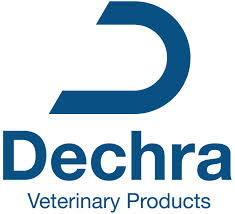
Related Observations
This treatment might be used for a horse exhibiting these signs.
You've viewed 2 of your 2 allowed records this month.
Create a free account for unlimited access.
We're hard at work improving both our website and mobile app with even more useful features for horse owners. Keep an eye out for these upcoming tools, or get the app to try some out now.
Your Stable
Send to Vet
Favoriting
Notes
Cost: $100 to $500
These cost ranges are approximate and may vary from region to region.
Additional charges may also apply.
Cost: $100 to $500
These cost ranges are approximate and may vary from region to region.
Additional charges may also apply.

This treatment might be used for a horse exhibiting these signs.
This treatment might be used to treat these conditions or ailments.
Cervical Vertebral Joint Pain & Disease
Osteoarthritis, OA, Generally
Intervertebral Osteoarthritis
Osteoporosis
Carpal Arthritis, Carpitis
Osteoarthritis, OA, Generally
Osteochondrosis, OC, Osteochondritis Dissecans, OCD
Bone Fragility Syndrome, BFS
Coffin Joint Arthritis, Low Ringbone
Fetlock Arthritis, Osselets
Your vet considers other treatments that might be used along with or instead of this treatment.

These are skills you might need if your horse is getting this treatment.
Equine health related brand name products and services.

Written, reviewed or shared by experts in equine health
CREDIBLE EQUINE HEALTH INFORMATION ON THE INTERNET
Denoix JM, Thibaud D, Riccio B. Tiludronate as a new therapeutic agent in the treatment of navicular disease: a double-blind placebo controlled clinical trial. Equine Vet J 2003;35(4):407-13.
Fortier et al. Systemic Therapies for Joint Disease in Horses. Cited in Oral Joint Supplement Topic, 2005.
Allen AK, Johns S, et al. How to Diagnose & Treat Back Pain in the Horse. AAEP Proceedings 2010;56:384-88.
Gough MR, Thibaud D, Smith RK. Tiludronate infusion in the treatment of bone spavin: a double blind placebo-controlled trial. Equine Vet J 2010;42(5):381-87.
Pers. Communication- Dr Joseph Manning, Dechra Tech Services Veterinarian.
Coudry V1, Thibaud D, Riccio B, Audigi? F, Didierlaurent D, Denoix JM
Efficacy of tiludronate in the treatment of horses with signs of pain associated with osteoarthritic lesions of the thoracolumbar vertebral column.
Am J Vet Res. 2007 Mar;68(3):329-37.
Coudry V, Thibaud D, Riccio B, et al. Efficacy of tiludronate in the treatment of horses with signs of pain associated with osteoarthritic lesions of the thoracolumbar vertebral column. Am J Vet Res 2007;68(3):329-37.
Gough MR1, Thibaud D, Smith RK. Tiludronate infusion in the treatment of bone spavin: a double blind placebo-controlled trial.
Equine Vet J. 2010 Jul;42(5):381-7. doi: 10.1111/j.2042-3306.2010.00120.x.